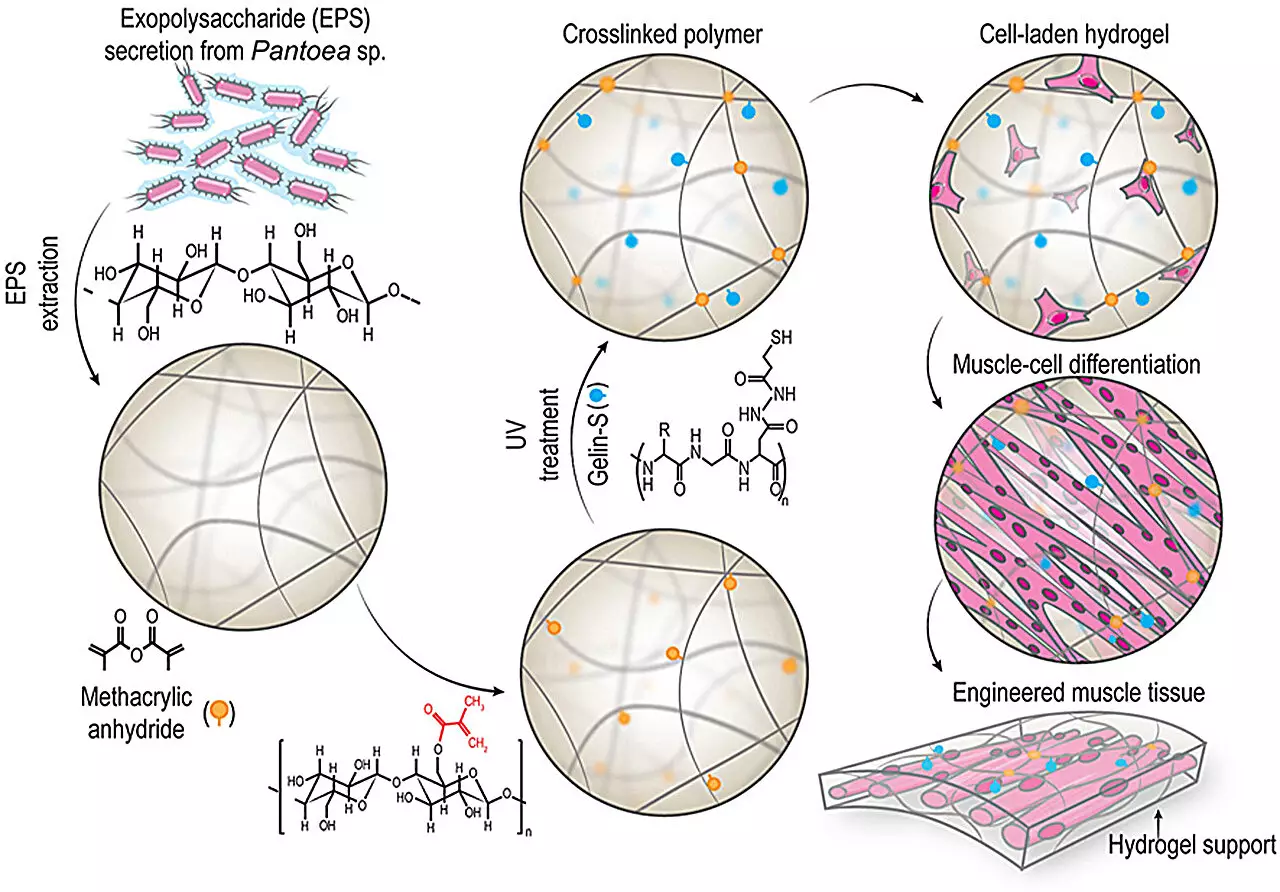Recent advancements in tissue regeneration have taken a fascinating turn, thanks to a research initiative led by Alireza Dolatshahi-Pirouz at the Technical University of Denmark. This team has ventured into the intricate world of bioengineering by leveraging the innate capabilities of bacteria to synthesize a pioneering biopolymer known as Pantoan Methacrylate (PAMA). The innovative approach aims to create a durable and elastic hydrogel specifically designed for muscle tissue repair, marking a significant milestone in regenerative medicine.
The researchers’ creation—termed “bactogel”—is a hydrogel that combines exceptional mechanical properties with biocompatibility. This substance has undergone preliminary testing in vivo, specifically through animal models, where its efficacy in facilitating muscle tissue regeneration has been demonstrated. Notably, the results indicated a marked increase in the formation of muscle tissue while simultaneously minimizing the incidence of fibrous tissue development. Such outcomes highlight a critical advancement, given the rigorous requirements demanded by musculoskeletal tissues.
What sets PAMA apart in the context of bioactive hydrogels is its remarkable mechanical strength, which is particularly crucial for applications concerning muscles—an area often challenging due to the physical demands on the tissue. Associate Professor Dolatshahi-Pirouz emphasized that it is challenging to find bioactive hydrogels capable of meeting the structural integrity required for effective muscle function. This finding positions PAMA as a vanguard solution, with the potential to reshape existing therapeutic approaches, especially for vulnerable populations, including athletes prone to injuries, the elderly, and military personnel recovering from trauma.
The implications of this research extend beyond current applications. The team has articulated ambitious goals of synthesizing even more efficient healing agents by integrating their bactogel with muscle progenitor or stem cells. This could exponentially enhance the healing process. Imagine a future wherein these bacteria-derived polymers—dubbed “bactomers”—are utilized to create dynamic, regenerative environments for injured tissues. This vision includes the concept of “regenerative bacto-baths” that would deploy healing agents on demand to address tissue injuries in a timely and efficient manner.
The strides made by Dolatshahi-Pirouz and his research team illuminate a promising pathway in tissue engineering. By harnessing the biological powers of bacteria, they have opened the door to a new class of regenerative therapies that could dramatically improve recovery outcomes for a range of traumatic injuries. The development of PAMA is not just an incremental enhancement in hydrogels; it symbolizes a potential paradigm shift in our approach to healing and regeneration, setting the stage for future innovations that may redefine medical strategies for muscle repair and beyond.


Leave a Reply